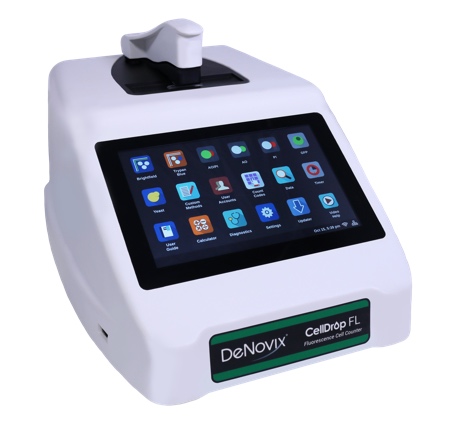Various methods of cell counting exist for quantifying the total number of cells in solution and calculating sample viability. The conventional method involves loading a sample into a cumbersome hemocytometer and observing particle concentration. A grid etched on the surface of the slide is used to measure cell density and determine the total cell count of the original mixture. There are several drawbacks to this technique, including poor reproducibility, high user-to-user variation and low throughput. An alternative is to perform cell counting with a slide-based cytometer. However, this method also has its limitations.
Life sciences and medical facilities often conduct cell counting of multiple sample types in varying conditions. This involves assaying samples with exclusion dyes such as trypan blue and loading the sample into the counting chamber of a hemocytometer. Cell counting is then conducted manually, which is time-consuming and can result in human sampling errors. Using an automated slide-based cytometer can significantly improve the quality of results, yet the single-use slide method has fallen out of favor due to the limitations of trypan blue as a viability stain and the high volumes of plastic waste and the cost of disposable slides.
New technology is required to accelerate cell counting and viability calculations using more selective and accurate fluorescence assays like acridine orange and propidium iodide.
Outlining Acridine Orange and Propidium Iodide
Acridine orange is a nucleic acid-binding fluorophore that can permeate viable cell membranes to selectively stain all nucleated cells. It is excited at wavelengths of approximately 502 nanometers (nm) when intercalated with dsDNA, emitting a green fluorescence with wavelengths of approximately 525nm.
Propidium iodide is not suitable for total cell counting or nucleated cell identification due to the assay’s inability to permeate intact cell membranes. Instead, it is only able to cross the membranes of cells with compromised membranes. This makes it useful in differentiating viable from non-viable cells. It is excited at wavelengths of approximately 535 nm and fluoresces red light in the region of 617 nm.
These assays can be used individually and in pre-prepared AO/PI assay kits. When cells in a sample are stained with both reagents, healthy nucleated cells fluoresce green exclusively while dead cells will only fluoresce red.
Cell Counting with DeNovix
DeNovix has developed an innovative product that eliminates the need for disposable plastic slides and introduces the simple load, measure, and wipe clean capabilities of nanovolume spectrophotometry to cell counting applications. The CellDrop FL is a stand-alone instrument equipped with both brightfield and dual fluorescence functionality. With individual applications AO/PI cell counting and viability, trypan blue and brightfield, it offers the utmost flexibility and reliability while reducing lab plastic waste and removing the cost of disposable slides.
If you would like to learn more about cell counting with the CellDrop range, please do not hesitate to contact us directly.




